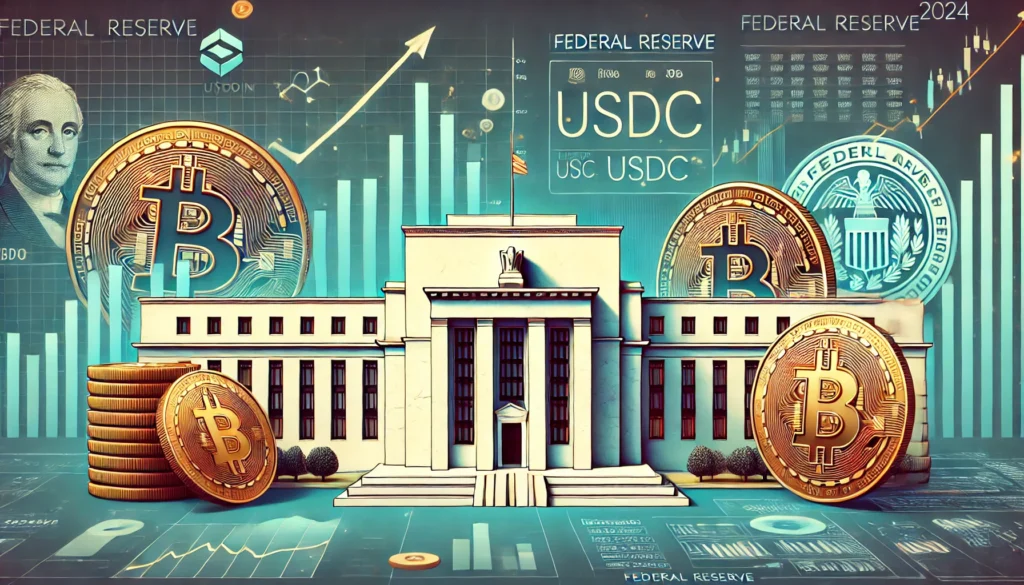
Introduction
As cryptocurrencies continue to grow in prominence, the U.S. Federal Reserve (Fed) has taken an increasingly active role in shaping the regulatory landscape. In 2024, the Fed’s stance on crypto remains a critical factor influencing market trends, investor sentiment, and the broader adoption of digital assets. This article explores the Fed’s position on cryptocurrencies, its impact on the market, and what investors should anticipate moving forward.
The Fed’s Evolving Perspective on Crypto
Initial Skepticism
In the early days of Bitcoin and other cryptocurrencies, the Fed maintained a cautious stance, often emphasizing the risks associated with digital assets, including:
- Volatility: Extreme price fluctuations that deter widespread adoption.
- Fraud and Illicit Activities: Concerns over cryptocurrencies being used for money laundering and illegal transactions.
- Lack of Regulation: The absence of a clear regulatory framework raised questions about investor protection.
Gradual Acknowledgment
Over time, the Fed began to recognize the potential of blockchain technology and the growing influence of cryptocurrencies in the global economy. By 2024, this acknowledgment has translated into active discussions and policy considerations.
Key Developments in 2024
Central Bank Digital Currency (CBDC) Initiatives
One of the Fed’s most significant crypto-related endeavors is its exploration of a U.S. Central Bank Digital Currency (CBDC), often referred to as the digital dollar. Key aspects include:
- Goals: Enhancing payment efficiency, increasing financial inclusion, and maintaining the U.S. dollar’s dominance in global trade.
- Current Status: Ongoing pilot programs and research initiatives to evaluate the feasibility and potential impact of a CBDC.
Regulatory Crackdowns
In 2024, the Fed has intensified efforts to regulate cryptocurrencies, often in collaboration with other agencies such as the Securities and Exchange Commission (SEC) and the Commodity Futures Trading Commission (CFTC). Key focus areas include:
- Stablecoins: Ensuring that fiat-backed stablecoins like USDC and Tether adhere to stringent reserve requirements.
- Crypto Lending and DeFi: Increasing oversight of decentralized finance platforms and crypto lending practices.
- Consumer Protection: Implementing measures to safeguard investors from fraud and market manipulation.
Interest Rates and Monetary Policy
The Fed’s monetary policy decisions, particularly interest rate adjustments, have significant implications for cryptocurrencies. In 2024:
- Rising Interest Rates: Higher rates tend to strengthen the U.S. dollar, reducing the appeal of Bitcoin and other digital assets as a hedge against fiat currency devaluation.
- Quantitative Tightening: Reduced liquidity in financial markets can lead to lower investment in riskier assets, including cryptocurrencies.
Implications for Investors
Increased Volatility
As the Fed introduces new regulations and policies, the cryptocurrency market is likely to experience heightened volatility. Investors should be prepared for sudden price swings driven by regulatory announcements.
Shift Toward Compliance
Cryptocurrency projects and platforms are increasingly focusing on regulatory compliance to attract institutional investors and avoid legal challenges. This trend could shape the future of innovation within the industry.
Opportunities in Stablecoins
Stablecoins that comply with new regulations may gain broader acceptance as a reliable medium of exchange and store of value, particularly in cross-border transactions and decentralized finance (DeFi) applications.
Diversification and Risk Management
Given the uncertainties surrounding the Fed’s actions, investors should adopt diversified strategies that balance cryptocurrency exposure with traditional assets like stocks and bonds.
What to Watch in 2024
- CBDC Announcements: Updates on the digital dollar initiative could significantly influence both the crypto market and traditional financial systems.
- Regulatory Clarity: Detailed guidelines on stablecoins, DeFi, and crypto taxation will shape the industry’s trajectory.
- Institutional Involvement: The Fed’s policies could encourage more institutional investors to enter the crypto space, bringing increased liquidity and credibility.
- Global Coordination: The Fed’s stance will likely align with international regulatory efforts, reflecting a broader trend toward global crypto regulation.
Comparative Analysis: Fed’s Stance vs. Other Central Banks
| Central Bank | Key Crypto Initiative | Regulatory Approach |
|---|---|---|
| U.S. Federal Reserve | Exploring CBDC (Digital Dollar) | Focused on stablecoins, DeFi |
| European Central Bank | Developing Digital Euro | Comprehensive crypto framework |
| People’s Bank of China | Digital Yuan (Launched) | Strict regulations, bans |
| Bank of Japan | Testing Digital Yen | Cautious, research-driven |
Conclusion
In 2024, the Fed’s stance on cryptocurrencies is both a source of challenge and opportunity for investors. While regulatory crackdowns and monetary policy adjustments may create short-term volatility, they also pave the way for a more stable and mature crypto ecosystem. By staying informed and adopting balanced investment strategies, investors can navigate this evolving landscape and leverage the transformative potential of digital assets. As the Fed’s policies unfold, the role of cryptocurrencies in the financial system is poised to become more significant than ever.
Relevant Resources
- Federal Reserve: Updates on CBDC initiatives and monetary policy.
- CoinDesk: News and analysis on cryptocurrency regulations.
- IMF: Insights on global economic trends and digital currencies.